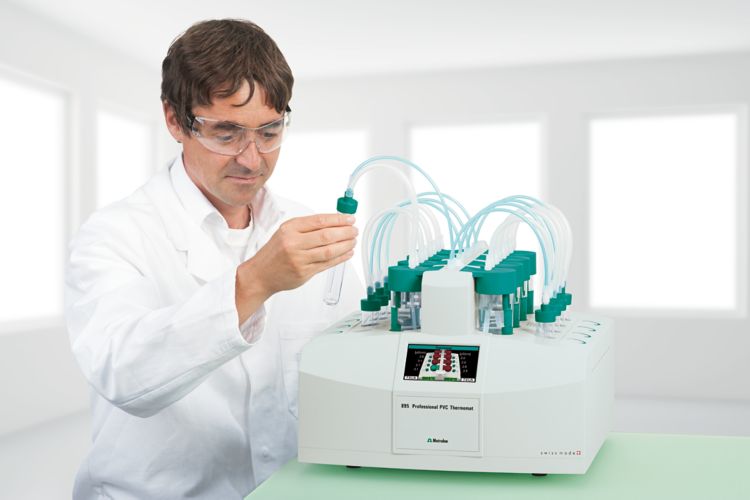Oxidation and thermal stability measurement with the Rancimat method
Accelerated aging testing (oxidation stability index and stability time) for natural oils and fats, fat-containing folds and cosmetics, biodiesel, and chlorine-containing polymers, such as PVC.
Highlights
We offer three dedicated stability measurement instruments for stability measurement: the Rancimat for the assessment of the induction time or oxidation stability index (OSI) of fat-containing foodstuffs, cosmetics, and natural fats and oils; the Biodiesel Rancimat for oxidation stability testing of biodiesel; and the PVC Thermomat for thermal stability testing of polyvinyl chloride (PVC) and other chlorine-containing polymers by means of the dehydrochlorination test (DHC).
- Dedicated oxidation and thermal stability testing instruments for natural oils and fats, biodiesel, and PVC
- Compliance with international standards: AOCS Cd 12b-92, ISO 6886, EN 14112, EN 15751, EN 16568, ISO 182, Part 3
- Convenient and efficient: individual sample analysis or simultaneous analysis of 8 samples
- Powerful software for instrument control, data management, and results evaluation
Brochure: 892 Professional Rancimat (8.892.5001, PDF, 2.1 MB)
Brochure: 893 Professional Biodiesel Rancimat (8.893.5001, PDF, 1.5 MB)
Brochure: 895 Professional PVC Thermomat (8.895.5000, PDF, 4 MB)
Benefits
Oxidation stability measurement: How does it work?

Our established Rancimat method is based on accelerating the oxidation process of the sample by raising its temperature and passing a continuous stream of air through it. The air flow transports volatile oxidation products from the sample vessel into a vessel containing distilled water. The oxidative stability instrument measures the conductivity of the water. A sudden, strong increase in conductivity marks the induction time.
The induction time is a standard parameter in quality testing of oils and fats in the food industry and gives indications about the remaining shelf life of a product.
Thermal stability testing of polymers: How does it work?

The dehydrochlorination test is done by heating the polymer sample to induce decomposition. As a result of the decomposition, gaseous hydrochloride (HCl) is released. The HCl that is released is transported from the sample vessel into a vessel containing distilled water by means of a continuous stream of nitrogen. In the sample vessel, the conductivity is continuously measured. Once HCl is formed, the conductivity increases. The time at which a 50 µS/cm increase is reached compared to the beginning of the measurement is the stability time, a measure of thermostability.
Systems
Talk to your Metrohm representative and learn about the best solution for your needs!
White paper: Quality control of fats and oils in cosmetics
Did you know?
We are a trusted partner of Standard Giving Organizations (SDOs) such as USP, ASTM, DIN, ISO, and others collaborating with them to make life healthier, safer and easier.
Show another









